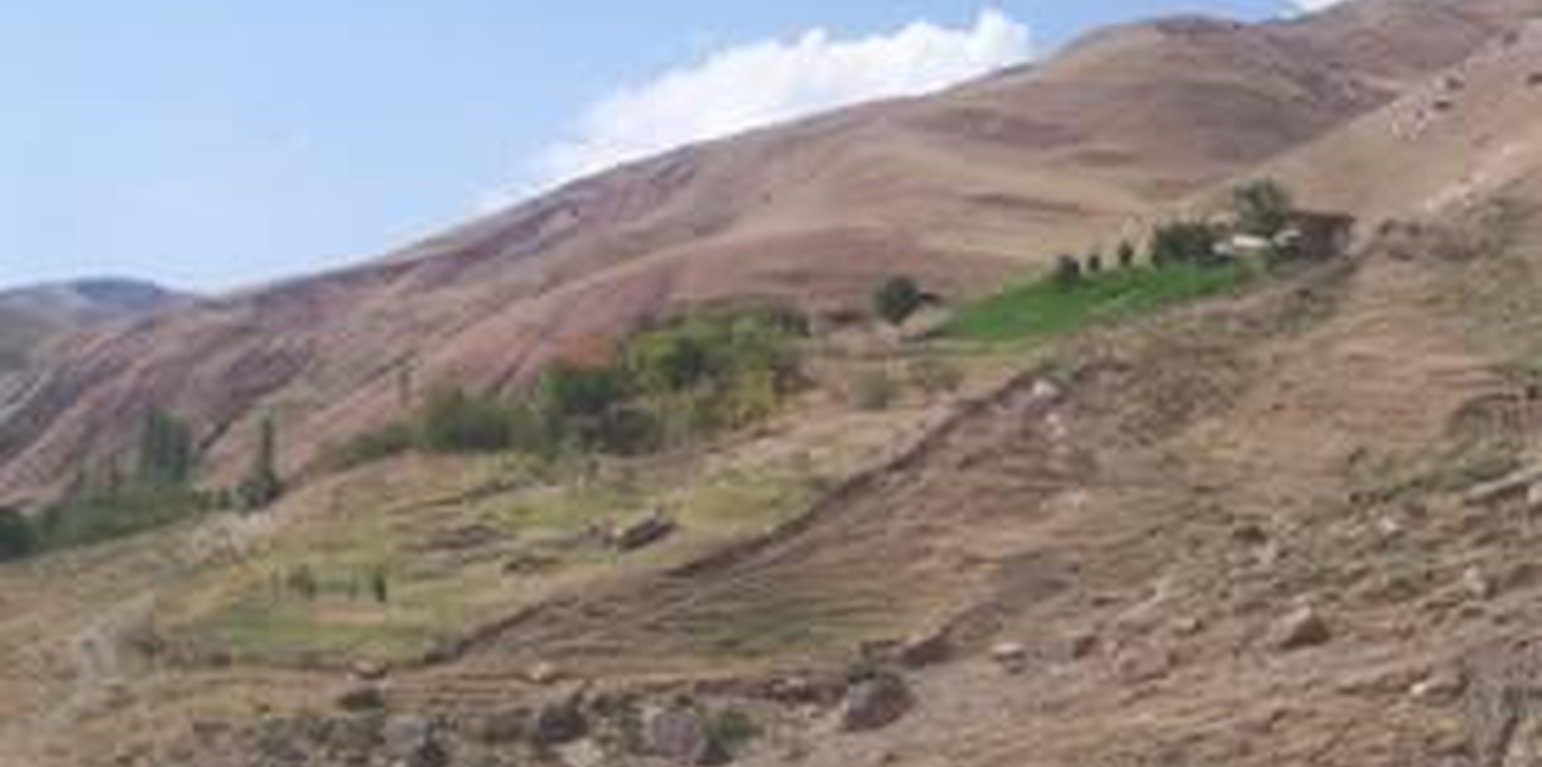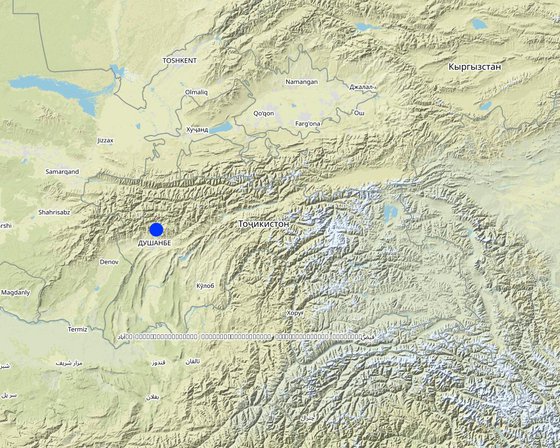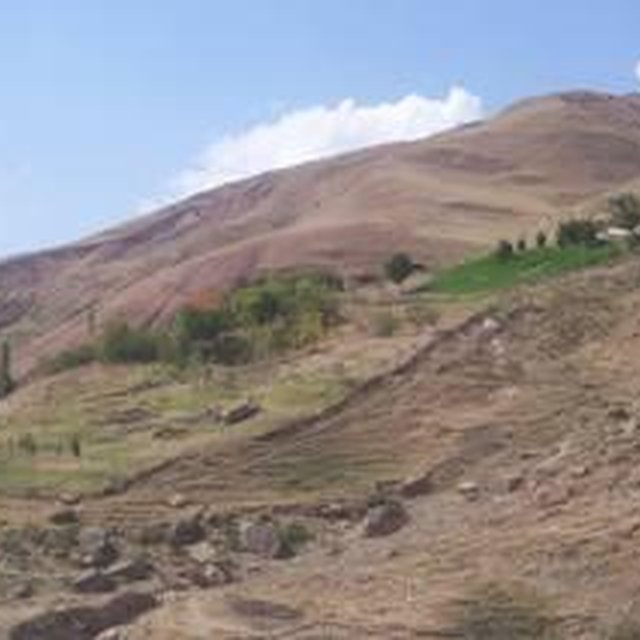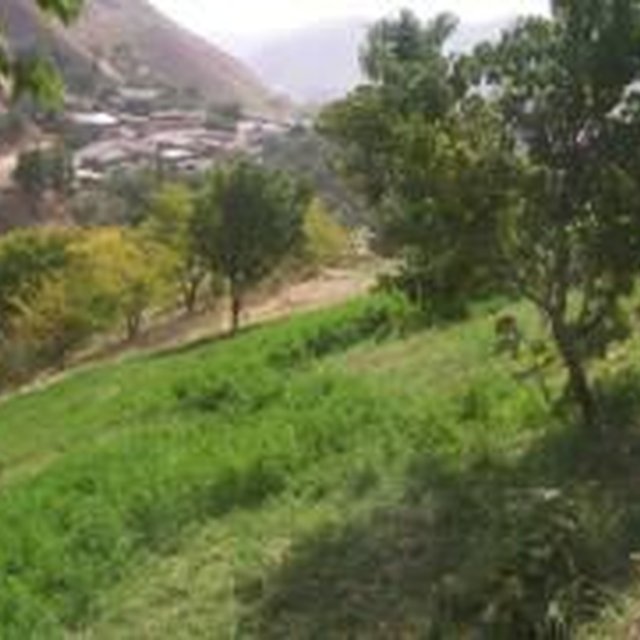



Aims / objectives: The farmer clearly stated that his prime, initial aim in taking over this “ruined and abandoned land” was to improve and better assure the quality of his family’s lifestyle, through enhanced and assured food and fodder production. He also recognised the potential for future profit, through sale of his excess produce to market. Currently, the family has almost no need to buy food (and fodder) from nearby markets, apart from flour (for bread making). This is a large cost saving factor. In hindsight, the farmer sees that he has dramatically improved land quality within the enclosure through mitigating erosion and increasing year-round vegetation cover
Methods: The success of the enclosure is the result of using several methods. The fence construction was critical to keep out both domestic animals (cattle, goats and sheep) and wild ones, (pigs and wolves) from what was to become a vegetation rich “island” amoungst the bare and degraded hillslopes. Stone clearing (by hand) of the whole area inside the enclosure greatly improved land quality due to enhanced soil depth and subsequent vegetative growth. Tree planting (apple, cherry, apricot, pear) was critical to provide family food. Lucerne planting provided food for the farmer’s animals (1 cow, 10 goats) that provide milk and meat. A small area of land near the homestead (approx. 20 x 20 metres) was levelled into several small terraces for vegetable production (potatoes, garlic, onion, peppers, tomatoes). Irrigation is conducted within the upper part of the enclosure; water being provided by a 20mm polythene pipe that brings water from 1.5 km away where there is a permanent spring.
Stages of implementation: The family (Enomali) first occupied this land in 1984. The first task was tree planting – the first orchard trees – on 0.1 ha of the current enclosure. This was fenced, then after nine family members left (to work in Dushanbe) he expanded the fence to the current 0.2 ha and continued to plant trees. Stone removal continued through the 1990s and even to today. The lucerne and vegetable gardens were initiated in the 1990s and continue to be enriched. The fodder, trees and vegetable production is an ongoing task, as is feeding the animals with the home-grown fodder. He continues to plant orchard trees every year and currently has more than 100. He gained a “certificate” of ownership” in 2008.
Role of stakeholders: All of the work within the enclosure has been conducted by family members. The main two are the husband and wife, though in the early stone clearing and fence construction days his 1st cousin assisted. His son and daughter in law have also assisted (though the son now works in Dushanbe) – even the young grandchildren help.

สถานที่: Varzob, Luchob, RRP, ทาจิกิสถาน
วันที่ริเริ่ม: 1984
ปีที่สิ้นสุด: 2014
ประเภทของแนวทาง

| ผู้มีส่วนได้เสียหรือองค์กรที่นำไปปฏิบัติใช้มีส่วนเกี่ยวข้องกับแนวทางนี้อย่างไร | ระบุผู้มีส่วนได้ส่วนเสีย | อธิบายบทบาทของผู้มีส่วนได้ส่วนเสีย |
| ผู้ใช้ที่ดินระดับท้องถิ่นหรือชุมชนระดับท้องถิ่น | Only the land users (family) | The men focused on the heavier labour tasks of fence building and stone removal. The women focus on the garden, and fruit production and bee keeping. |
การตัดสินใจถูกทำโดย
การตัดสินใจถูกตัดสินอยู่บนพื้นฐานของ
There is a dramatic visible difference in both the degree of erosion and vegetative land cover between the enclosure and the surrounding land (see picture in 1.3.3). Also, the production quantity and quality of food and fodder from this enclosure has continued to increase.
After the fall of the Soviet Union, many in Tajikistan experienced poverty, particularly food shortages. This farmer foresaw this and commenced his enclosure enrichment work. In this way he ensured
The farmer says that several of his neighbours have been doing similar interventions to his – fencing, stone removal, planting orchards etc. What he has done is very visible from the main road through the valley, and many people have observed the results of his efforts over the years
The farmer never had external “support” in the first place, so his approach continues to improve, with no support.